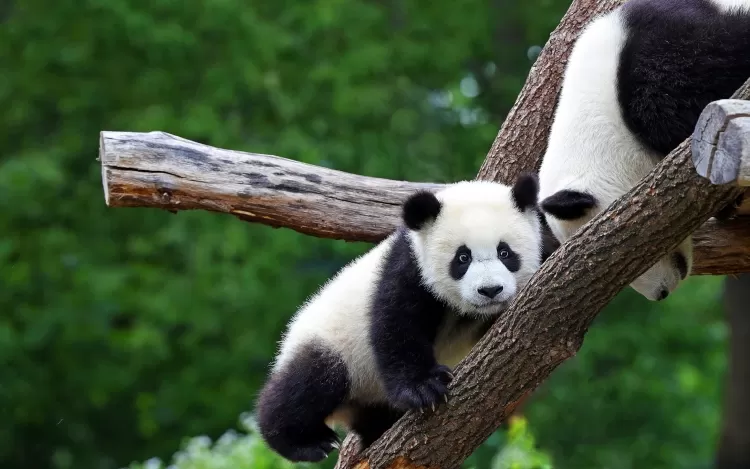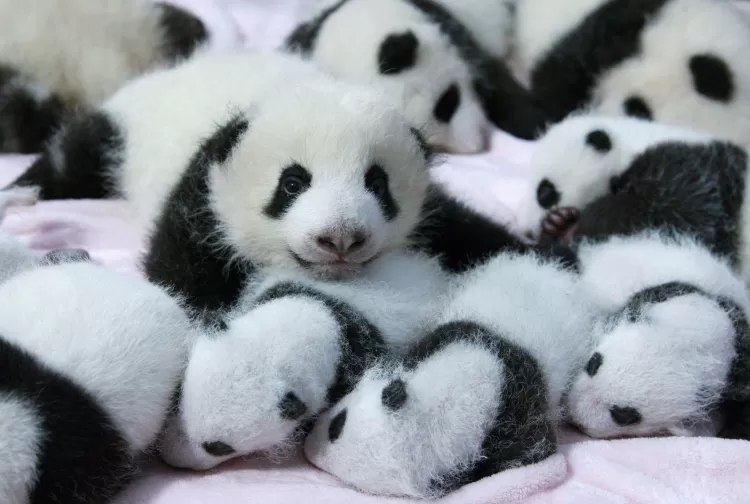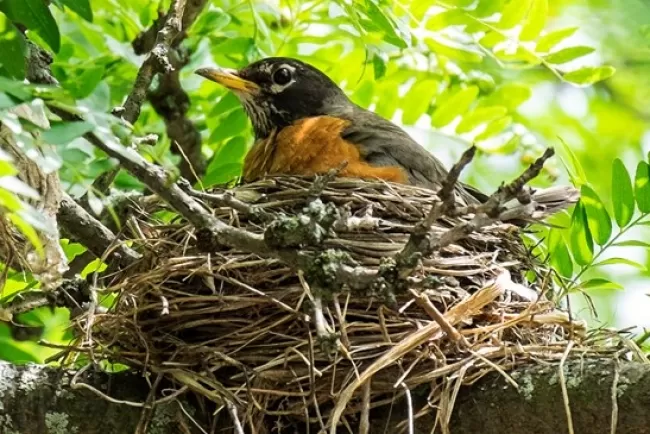"Pandas: Nature’s black-and-white wonder."
Today, the giant panda is not only a symbol of China but also of worldwide conservation endeavors. Its endearing appearance and story of survival against the odds have made it a global ambassador for wildlife protection, inspiring people everywhere to take action in safeguarding endangered species and their habitats. As conservation efforts continue, the panda serves as a poignant reminder of the delicate balance between nature and humanity and the critical need to work together to protect the planet’s most vulnerable creatures.

The giant panda (Ailuropoda melanoleuca) is one of the most recognizable and cherished animals on the planet. Native to China, pandas are known for their striking black-and-white fur, with distinctive black patches around their eyes, ears, and legs. While their adorable appearance and gentle demeanor make them globally adored, the giant panda is much more than just a charming creature. The species has a unique biology, a rich history, and an ongoing conservation journey that continues to evolve.
Pandas are primarily herbivores, with bamboo comprising nearly their entire diet. They have evolved to be highly specialized feeders of bamboo, with features like strong jaws and large molars that allow them to grind the tough, fibrous plant. Despite being classified as carnivores (order Carnivora), pandas get very little nutritional value from bamboo. Since bamboo is not nutrient-dense, pandas must consume large quantities each day—sometimes up to 40 pounds (18 kilograms)-to meet their energy requirements. This specialized diet means that pandas spend much of their time foraging, eating, and resting to digest the bamboo.
An interesting aspect of the panda’s biology is its digestive system. Though pandas primarily eat plant material, their digestive tract is more similar to that of a carnivore. This makes them inefficient at digesting bamboo, limiting their ability to absorb all its nutrients. However, pandas have adapted with a set of powerful molars that help them break down bamboo fibers, making it easier to digest. The high-fiber diet further contributes to the need for pandas to consume a constant amount of food to fuel their energy needs.

When it comes to reproduction, giant pandas have a relatively low reproductive rate. Female pandas are only fertile for a brief period each year, usually just 2-3 days during the spring breeding season. This short fertility window, combined with the solitary nature of pandas, makes finding a mate challenging. Furthermore, panda cubs are rare in the wild, with females typically giving birth to one or two cubs. However, it’s incredibly rare for both cubs to survive, as the mother can usually only care for one at a time.
Panda cubs are born very small and underdeveloped, weighing about 1/900th of their mother's body weight. During the first few months of life, the mother protects and nurtures the cub in the safety of a den. At birth, the cubs are completely helpless and depend on their mother's care for survival. It takes up to 18 months for a panda cub to be weaned and mature enough to survive independently, which further contributes to the species' slow reproduction rate. Cubs generally remain with their mothers for around two years, learning essential survival skills for life in the wild.
Historically, pandas were found across much of China, but their range has been severely reduced due to habitat loss, particularly from deforestation. Once common in lowland areas, pandas are now mostly confined to remote mountainous regions of central China, where bamboo forests still thrive. The destruction of bamboo forests from logging, agriculture, and urban development has played a major role in the decline of the panda population.
Conservation efforts to protect the giant panda have been underway for decades, and significant progress has been made in preventing their extinction. In the 1970s, China began establishing reserves to safeguard pandas and their bamboo forests. Organizations such as the World Wide Fund for Nature (WWF) have played a key role in raising awareness and funding conservation efforts.

As a result of these initiatives, the panda population has gradually increased. In fact, in 2016, the International Union for Conservation of Nature (IUCN) downgraded the panda’s status from "endangered" to "vulnerable," signaling the success of these conservation programs.
Captive breeding programs have also contributed to boosting the panda population. Zoos around the world, especially in China, have been successful in breeding pandas in captivity to help grow the population. Notably, the Chengdu Research Base of Giant Panda Breeding has become a center for research, breeding, and panda conservation. These efforts, along with the creation of wildlife corridors to connect fragmented panda populations, have played an essential role in increasing the panda population both in the wild and in captivity.
Despite these advances, challenges persist. Habitat loss due to human development and the impacts of climate change remain significant threats to panda populations. Climate change, in particular, poses a risk to bamboo forests, which are highly sensitive to changes in temperature and rainfall. This could further threaten the long-term survival of pandas in the wild. Nevertheless, the giant panda remains a symbol of hope for wildlife conservation across the globe. Its survival story serves as a powerful example of what can be achieved through dedicated conservation efforts and highlights the importance of preserving biodiversity.
What's Your Reaction?

















